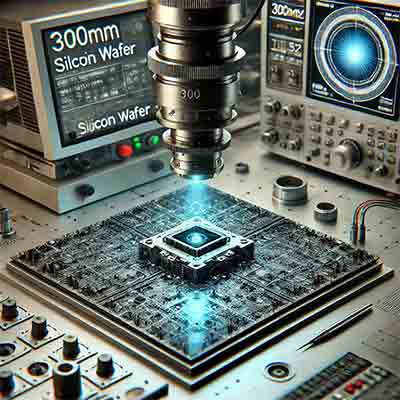Silicon Wafer as beam splitter in the THz Range
A PhD researcher requested the following quote:
We are interested in buying a beam splitter for THz applications with the following specifications: Si-window 50:50
Size: [34 -0,2 mm] x [29 -0,2 mm] (these dimensions could vary)
Optical polished surfaces
R > 10 kOhm/cm
Thickness must be higher than 1mm (from 1.5 to 6 mm could be possible values). I prefer multi-crystal. I think single crystal could affect our measurements in the future.
Could you send me prices and delivery time of the different options?
Reference #213809 for Specs and Pricing!
Get Your Quote FAST! Or, Buy Online and Start Researching Today!
High Resistivity Silicon Wafers for THz
A product marketing specialist requested a quote for the following:
I was wondering if you also supply high resistivity 300mm Si wafers for some ThZ measurements that require high resistivity.
300mm diameter siliconwafer <100>
High resistivity (>1kohm-cm)
Doping (does not matter P or N)
Can be mechanical/test/reclaim grade
Reference #214438 for specs and pricing.
Cadmium Telluride (CdTe) for Beam Splitter
A corporate scientist requested help with the following:
Since our CdTe is mainly focused for hard x-ray imaging, if you want to use other purpose, I don’t recommend our CdTe.
In addition, since our CdTe orientation is (1,1,1), if you want (1,0,0), it is difficult to meet your request.
Our use for CdTe would be in sensing electric fields, somewhat similar to the way in which ZnTe is used in the measurement the E-field of radiating THz pulses. In fact, we did also inquire about ZnTe as an alternative to CdTe. Since it looks like CdTe is not a possibility, please let me know if the specs we presented for the ZnTe wafers can be met.
Reference #224665 for specs and pricing.
Float Zone Silicon Wafer for THz Optics
A PhD candidate requested the following quote:
Could you please send me a quote for a high resistivity Si wafer, diamater 25.4, thickness 100µm.
Application: THz optics, no need for a particular cristal orientation.
Reference #225149 for specs and pricing.
Gallium Phosphide Wafers for THz Generation
A PhD candidate requested help with the following:
We want to oder 0.5mm GaP <110> for THz generation and detection. We want 5 pieces.
Reference #312532 for specs and pricing.
What Substrates are Used for Terahertz Applications
Terahertz (THz) radiation, which typically spans the frequency range from 0.1 to 10  THz, occupies space between microwaves and infrared radiation in the electromagnetic spectrum. The applications for this frequency range are vast, including security screening, pharmaceutical analysis, material characterization, wireless communications, and medical imaging.
THz, occupies space between microwaves and infrared radiation in the electromagnetic spectrum. The applications for this frequency range are vast, including security screening, pharmaceutical analysis, material characterization, wireless communications, and medical imaging.
In developing devices for terahertz applications, certain materials or substrates are more preferable due to their transmission, propagation, or detection characteristics at terahertz frequencies. Some of these substrates include:
Quartz: Due to its low absorption in the THz range and high transparency, quartz is often used as a substrate for terahertz time-domain spectroscopy (THz-TDS) and other applications.
Silicon: High-resistivity silicon wafers are frequently employed in THz applications because of their low losses at THz frequencies and easy integration with other semiconductor devices.
Sapphire: This crystal offers a broad transmission range, from ultraviolet to terahertz, making it ideal for specific terahertz applications.
Zinc Telluride (ZnTe) and Gallium Phosphide (GaP): These are often used for electro-optic detection of THz waves because of their good electro-optic coefficients.
Photoconductive Antennas: These typically use substrates like low-temperature-grown Gallium Arsenide (LT-GaAs) or Indium Gallium Arsenide (InGaAs). When illuminated, these materials can quickly switch from an insulator to a conductor, which is useful for generating or detecting THz waves.
Organic Crystals: Materials like DAST (4-N,N-dimethylamino-4’-N’-methyl-stilbazolium tosylate) and DSTMS (4-N,N-dimethylamino-4'-N'-methyl-stilbazolium 2,4,6-trimethylbenzenesulfonate) have been studied for their non-linear properties in the terahertz range.
Magnesium Oxide (MgO): This is sometimes used due to its good thermal and optical properties in the terahertz range.
Polymer-based materials: Such as polyethylene, Teflon, and Zeonex. These materials are often used in THz lenses, waveguides, and windows due to their transparency in the THz range and ease of fabrication.
It's important to note that the choice of substrate or material often depends on the specific application within the THz range. For instance, while a material might be ideal for THz generation, it might not be the best choice for THz detection or propagation.
